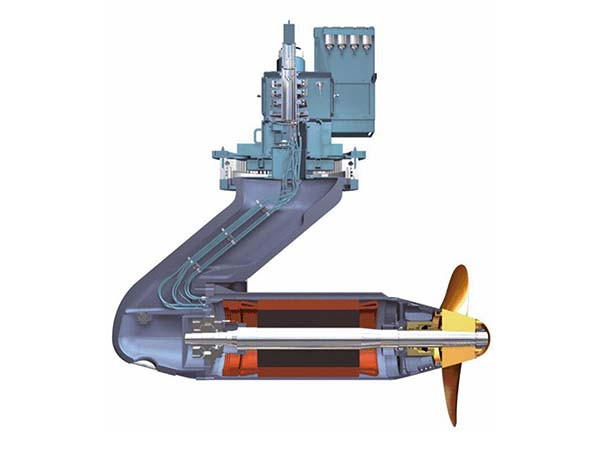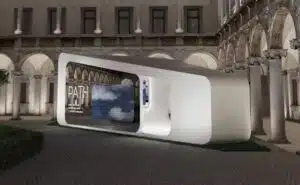[vc_row][vc_column][vc_column_text]In traditional ship propulsion The boat's engine is a diesel that is connected to the propeller via an axle line, or with an S-drive type system in which the coupling is made with bevel gears that leave the stern foot (which holds the propeller) free to move a few tens of degrees on the vertical axis. We therefore have thedrive unit inside the hull and the propeller outside the hull.
For some years now, first for large ships and then gradually also for smaller vessels, a new type of propulsion which improves hydrodynamic efficiency, simplifies the arrangement of mechanical parts and saves space on board. All with lower fuel consumption (-18%) and less air pollution.
The leading company in this type of propulsion is Swiss ABB, which with its patented Azipod technology has succeeded in integrating an electric motor, propeller and rudder into a single container (pod). Making them into more rotating 180 degrees with computer-controlled movement. The electric motor is powered by batteries, which in turn are recharged by diesel generators. The batteries are recharged fully automatically; it is the system that senses the drop in capacity and starts the generators for the time strictly necessaryThe increase in efficiency is remarkable.
Avoiding the traditional axis line offers many advantagesThe use of electric cables instead of mechanical transmission parts greatly reduces vibrations and frictional losses; the propeller (usually pulling) works in a flow of free water, achieving greater hydrodynamic and mechanical efficiency. The rotation on the vertical axis of the azimuth unit allows the ships to be more manoeuvrable. The computer automatically manoeuvres the Azipods to achieve the desired movement of the ship for the pilot, who no longer acts on a classic rudder, but on a joystick-like instrument.
Among many advantages, however, there are also some inconvenience. During the first years of service, some problems occurred on the cruise ships that mounted the largest of the Azipods, the Model V. The main problem was the durability of the propeller shaft bearings. The latest model, the Azipod X, incorporates these improvements, ensuring a maintenance interval of five years; in addition, the bearings can be replaced while the ship is at berth.
Until now, the use of this technology has mainly been on large icebreakers, fast ferries and cruise ships, but recently, with thelowering costs, a transfer is also beginning to occur in recreational productionstarting, of course, with megayachts. The first shipyards to adopt this technology were the Italians Benetti and Picchiottiwho on a 65-metre and a 73-metre respectively have chosen to rely on Azipods. It is easy to foresee that the considerable fuel savings will make this choice increasingly popular, introducing a revolution in the yachting industry. performance of the boat, interior design possibilities and integration with on-board electronic systems.
Click here for information on the next Master in Yacht Design IDI – Sabaudia (LT).[/vc_column_text][/vc_column][/vc_row][vc_row][vc_column][mk_button dimension=”outline” corner_style=”full_rounded” size=”medium” icon=”mk-icon-home” url=”/” align=”center” margin_top=”30″ margin_bottom=”0″ margin_right=”0″]Torna alla Home[/mk_button][/vc_column][/vc_row]





